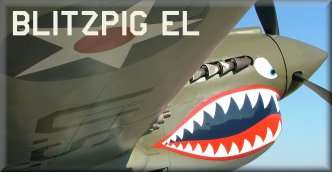
 |
|
|
|
#1
|
|||
|
|||
|
Quote:
Their real strength was dive speed. The factor that won the French order was a 400mph dive speed in show trials, considered totally remarkable at the time. I've got some anecdotes from the test pilot and ground crew for that trial but no performance tables or anything, just his description and some figures here and there. |
|
#2
|
||||
|
||||
|
At the Curtiss demonstration of dive speed for the French, an amazingly high, 575 mph, was reported, but this was due mostly to error in the recording instruments. Still, the Hawk 75 could dive much faster than the unthinkably low 390mph IAS limit that was artificially placed on it by the USAAC. After all, this is the same basic airframe used in the Hawk 81 versions of the P40, and they were good for what?, 500mph IAS in the dive?
Also of note, the P36 was the first US Army aircraft with any kind of red line speed restrictions. We were entering a new world of aircraft performance. Not bad for a design that dates to 1934.
__________________
 Personally speaking, the P-40 could contend on an equal footing with all the types of Messerschmitts, almost to the end of 1943. ~Nikolay Gerasimovitch Golodnikov |
|
#3
|
|||
|
|||
|
IIRC, Vichy air force flew its Hawks against USN Wildcats during the Torch landings...
...which might have looked like this: Last edited by Lagarto; 05-27-2012 at 11:59 AM. |
|
#4
|
||||
|
||||
|
The Vichy pilots fared very poorly against the USN's Wildcats. I don't think I would necessarly blame this on the aircraft.
And as a side note, I have always wondered why the Vichy French attacked Allied forces. Very odd looking at it from our time.
__________________
 Personally speaking, the P-40 could contend on an equal footing with all the types of Messerschmitts, almost to the end of 1943. ~Nikolay Gerasimovitch Golodnikov |
 |
| Thread Tools | |
| Display Modes | |
|
|